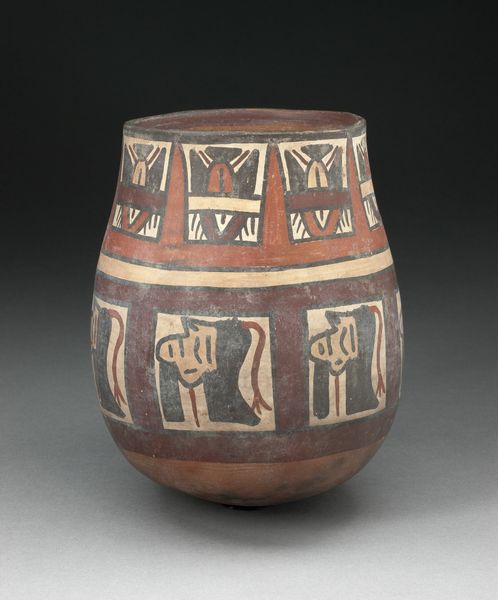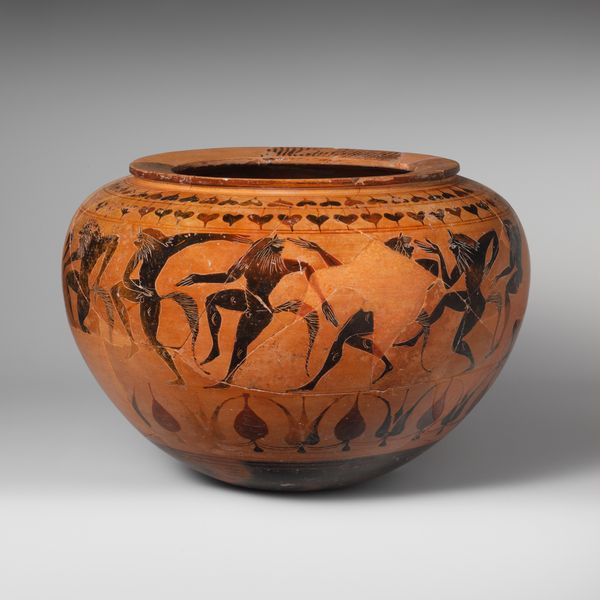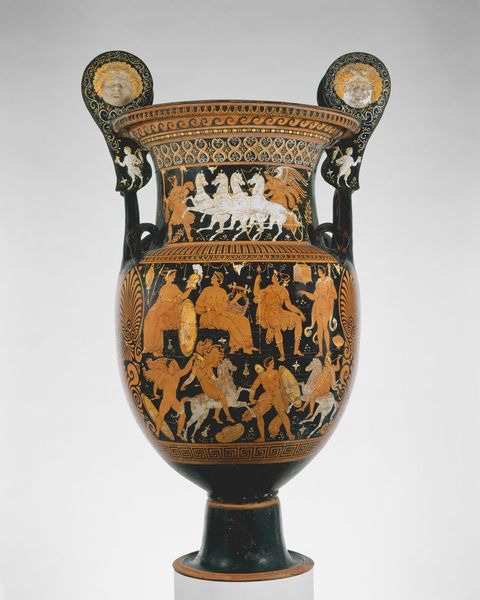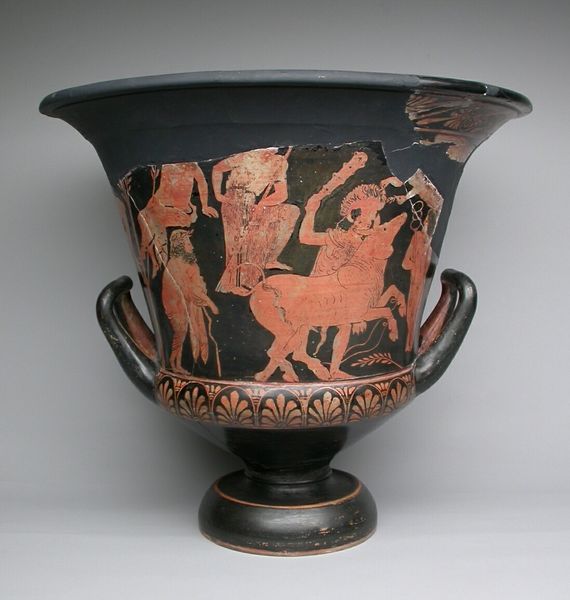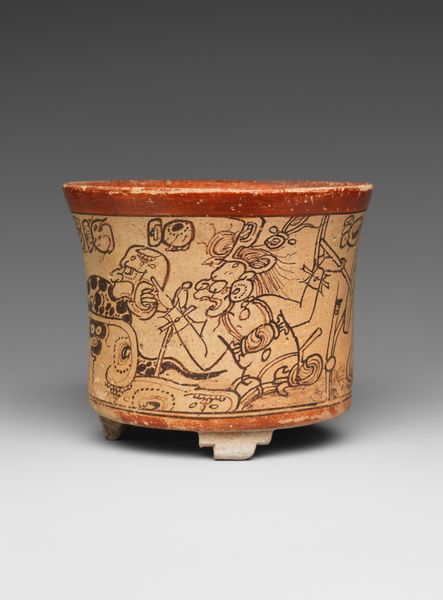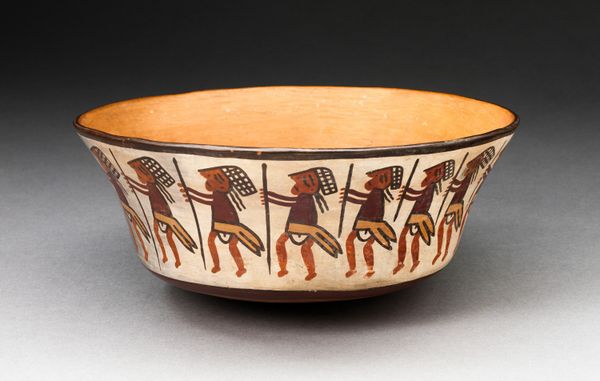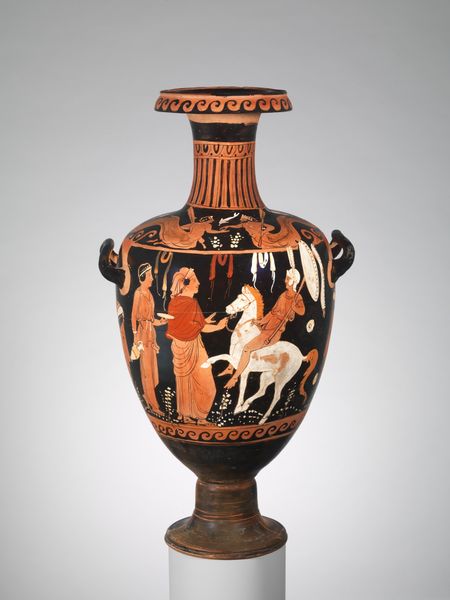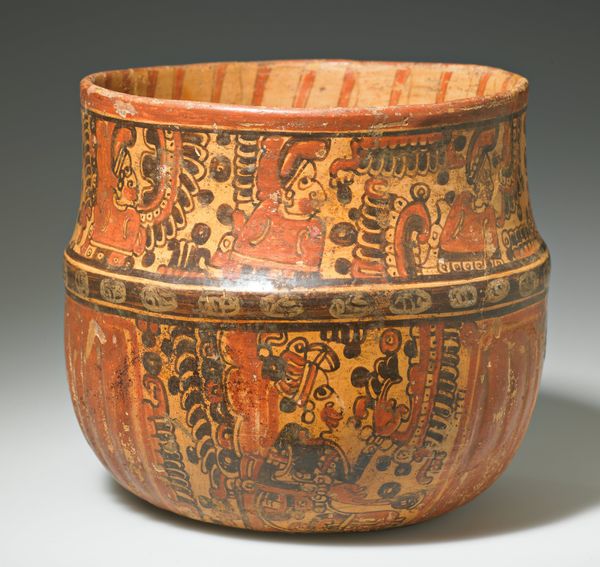
terracotta
#
pottery
#
greek-and-roman-art
#
figuration
#
roman-art
#
geometric
#
ancient-mediterranean
#
terracotta
#
decorative-art
Dimensions: H. 7 1/4 in. (18.4 cm); diameter 12 in. (30.5 cm)
Copyright: Public Domain
Curator: This piece, "Terracotta dinos (mixing bowl)," dates all the way back to 630 BC. It's a stunning example of early Greek pottery. Editor: My initial response is the dynamism is incredible; even though these are stylized figures, there’s such movement captured in these friezes. What stands out for you? Curator: What’s most striking is the composite imagery – look at the placement of griffins and panthers intermixed with simple goats and floral designs. These creatures aren’t dinosaurs, though the label is amusing! These figures speak volumes about the worldview of the people who made and used this bowl. What do these juxtapositions of powerful creatures suggest? Editor: I think you’re spot-on, and those alternating registers play a key role. The repetition and almost obsessive symmetry create an inherent stability – an anchor to offset those ‘powerful creatures,’ as you call them. You've got beasts and then calm flora. How do you think the material choice, terracotta, ties into this dichotomy? Curator: Terracotta as a material ties everything to the earth, to the elemental. And this mixing bowl becomes a sort of vessel, containing not just material ingredients, but also ideas, fears, and mythologies made tangible. We must remember that pottery served sacred and profane purposes at that time. The image carries psychological weight beyond pure decoration. Editor: That hits a really powerful point. In seeing these mythical scenes from what’s likely a daily vessel, there’s this fusion of function and ritual. The bold outlines and strong silhouettes almost render the animal's figures as symbols of primordial powers, harnessed, framed— quite literally held— by geometric order. The tension between stylized nature and manmade form is beautiful, almost like magic realism, wouldn’t you agree? Curator: It's an enduring record of what those long-ago people valued, feared, or simply found beautiful. It invites us to see the past not just as history, but as a reflection of our shared human consciousness. Editor: Right, an intriguing interplay between artifice and raw emotional projection, indeed. Thanks to these old shards of pottery, it reminds you that even as history continues to get revised, the echoes of older art pieces still manage to get heard in some sense.
Comments
No comments
Be the first to comment and join the conversation on the ultimate creative platform.
